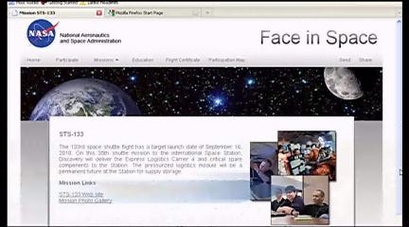SYDNEY (AFP) – A tiny heatproof capsule which scientists hope contains some of the oldest dust in the universe will streak back to Earth and land in the Australian desert Sunday, ending a historic space mission.
Japan's Hayabusa spacecraft is due to re-enter Earth's atmosphereshortly before midnight (1400 GMT), completing a seven-year, five-billion-kilometre (three-billion-mile) journey to an ancient far-flung asteroid.
The car-sized probe became the world's first spacecraft to land on and lift off a celestial body other than the moon after touching down on Itokawa, a "rubble-pile" asteroid 300 million kilometres distant, in September 2005.
If the landing is successful, Hayabusa will be the first space mission to have made physical contact with an asteroid and returned to Earth.
Its on-board devices showed Itokawa was between "several tens of millions and hundreds of millions" years old, and had broken away from an ancient celestial body formed in the Solar System's most primitive stages.
Hayabusa blasted into space in May 2003 tasked with collecting samples from the asteroid's surface, which it is believed could yield unprecedented information about the evolution of the Universe, and fire them back to Earth in a heatproof capsule.
But a system to stir up dust malfunctioned, and scientists from Japan's space agency JAXA are uncertain what, if anything, the sample canister will contain.
An international team of astronomers has gathered in the vast Australian Outback to witness the spectacular end to Hayabusa's journey as it breaks up and is obliterated on re-entry by atmospheric temperatures hotter than the surface of the sun.
Described by NASA scientists as a "man-made meteor", the spacecraft will glow several times brighter than Venus and appear to skygazers as a luminous shooting star as it melts.
The carbon-coated dust capsule, released before Hayabusa hits the atmosphere, will streak down to Earth at a blistering 7.58 miles (1.93 kilometres) per second.
Once it is 10 kilometres above the ground the pod will shed its heat shield and deploy a parachute and homing beacon to signal its exact landing location in the Woomera rocket-testing range, in the central Australian desert.
Local Aboriginal tribespeople will accompany officials in their search for the precious cargo to ensure no damage is done to sites scared to their ancient culture, which stretches back more than 40,000 years.
The capsule will be retrieved by helicopter, for air-freighting by jet to ground control at Sagamihara, west of Tokyo, where it will be x-rayed, analysed and finally opened by scientists from Japan, Australia and the US.




Tidak ada komentar:
Posting Komentar